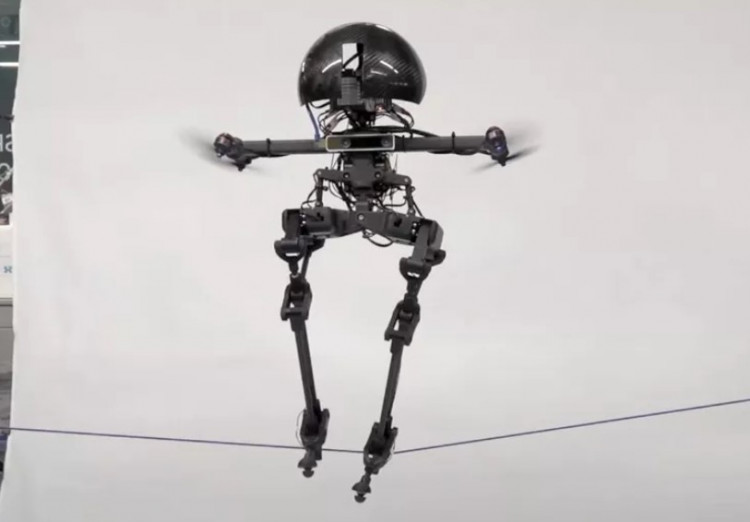A bird-inspired two-legged robot can walk, skateboard, fly, and balance on a slackline, which is similar to a loose tightrope. It has the potential to become a new tool for monitoring infrastructure in hard locations.
The robot, dubbed LEONARDO (LEgs ONboARD drone) by its inventors at Caltech and Northeastern University in Boston, is a human-like machine with knee, hip, and ankle joints, but rotor blades for arms that provide upward propulsion.
LEO is essentially the bottom half of a humanoid robot strapped to a flying drone.
The researchers' goal was not to create the next mass-marketable innovation, but to test new locomotion methods for robots that might perform dangerous tasks or explore hard-to-reach places.
LEO stands 2.5 feet tall and has two actuated joints on each leg, as well as four propeller thrusters positioned at an angle at the robot's shoulders.
When walking, a person adjusts the position and alignment of their legs to move their center of mass forward while maintaining body balance. LEO walks similarly: the propellers keep the robot upright while walking, and the leg actuators alter the position of the legs to move the robot's center of mass forward using a synchronized walking and flying controller.
In flight, the robot flies like a drone, using only its propellers.
"We drew inspiration from nature," Soon-Jo Chung, corresponding author of the paper published this week in the journal Science Robotics, said in a statement.
"A complex yet intriguing behavior happens as birds move between walking and flying," Chung added. "We wanted to understand and learn from that."
Researchers are already considering methods to improve LEO's energy efficiency by redesigning the legs so that it relies less on the propellers for balance while walking. The team is also focusing on making it more autonomous so that it can assess its surroundings and determine the best course of action.
The researchers intend to equip LEO with a newly developed deep neural network-based drone landing control algorithm. With a deeper grasp of the environment, LEO may decide for itself the optimal combination of walking, flying, or hybrid motion to utilize to get from one point to another, based on what is the safest and most energy-efficient.
This technology could have a future on Mars, where it could represent a new generation of rotorcraft, according to the robotics team. The design would build on NASA's Ingenuity helicopter's success.






